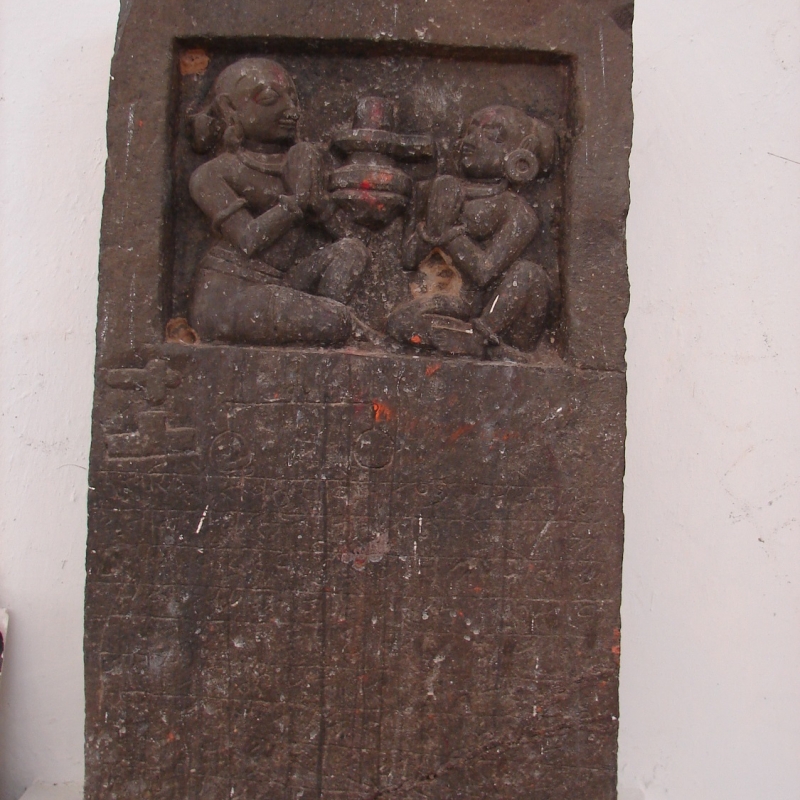Memorial stones are stele specific to individual persons erected in a moment of time in honour of the valiant dead. These are not devised for deities and hence exist outside temple spaces: in semi-religious centres that are not completely sacred. A point of interest here is that although these are not built for any god, most of these are nevertheless deified. However, in the present context, a number of such memorials skirt the Bhoramdeo temple (Plate 1), and some are placed in the museum of the complex.
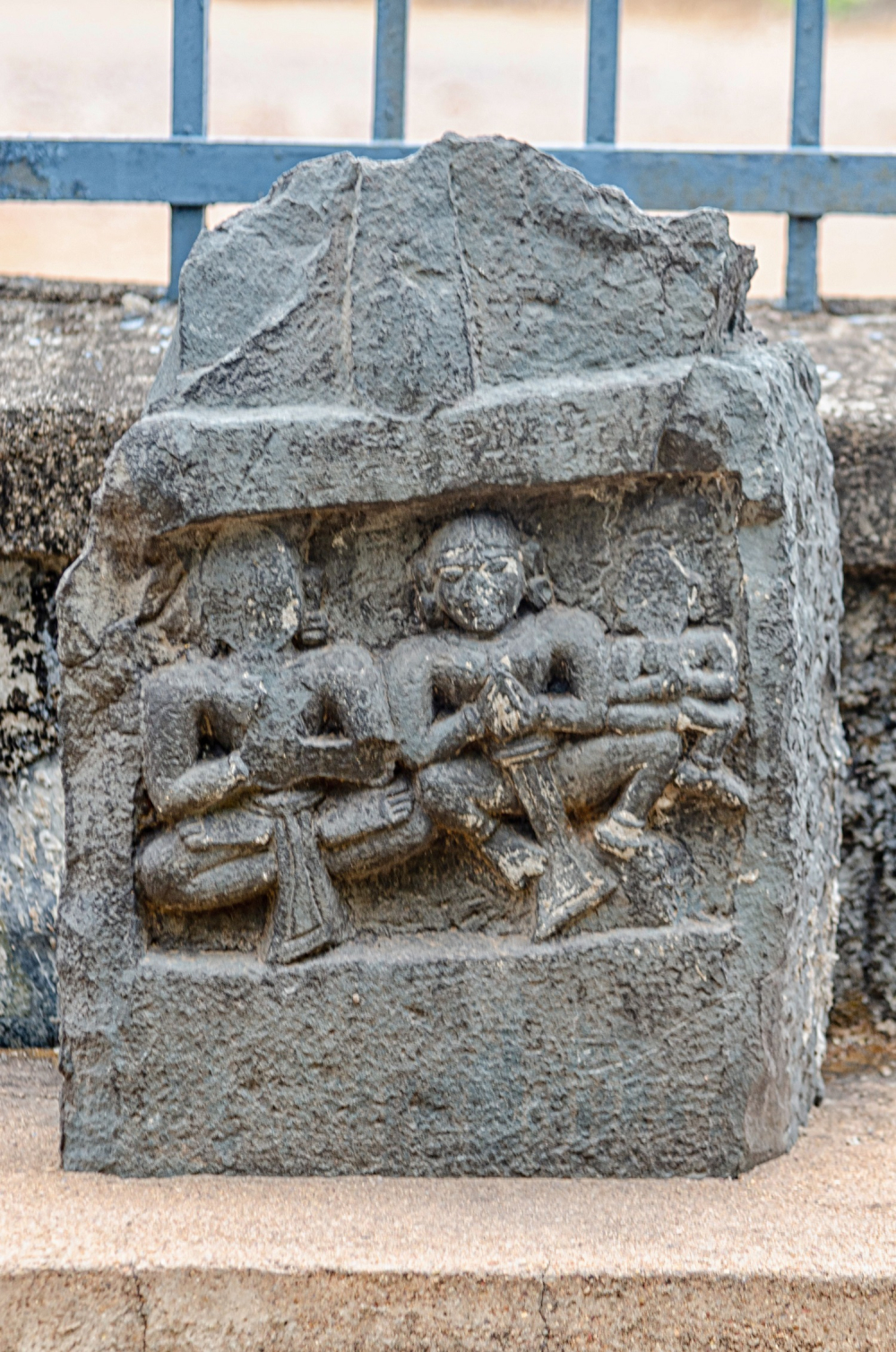
Bhoramdeo Temple Complex, Memorial Stone
These were earlier erected elsewhere, possibly in the ‘tribal’ fringe spaces outside of the community village, and later put up at the Shaiva site, so as to give them a more dignified and deified place. Over a period of time memorials stones become devatās or ancestors of clans and communities, infused with a rich ritual culture, and regularly worshipped. Tribes converging at the village burial ground, performing burial rituals for the dead clan member amidst recital of burial song called the “hanal pata” in Gondi dialect, accompanied with a melancholic beating of drums, and raising memorials to preserve the soul of the dead even now is a common sight in remote tribal areas of Chhattisgarh. This example of a living tradition is widespread in all of central India, although the monuments erected are more wooden now than stone.
The stele are small or medium sized, usually 3 feet high, although can be as large as 7-8 feet, resemble tombstones in shape and size with rectangular, arched or triangular top. The ones in the Bhoramdeo complex in Chhattisgarh measure from 2 to 2.5 feet. The form and iconography of memorial stones changed through time, depending on the social standing of the one commemorated. The simplest consist of single panelled stele with a depiction of a hero standing in a warrior’s stance, clutching his weapons (Plate 2).
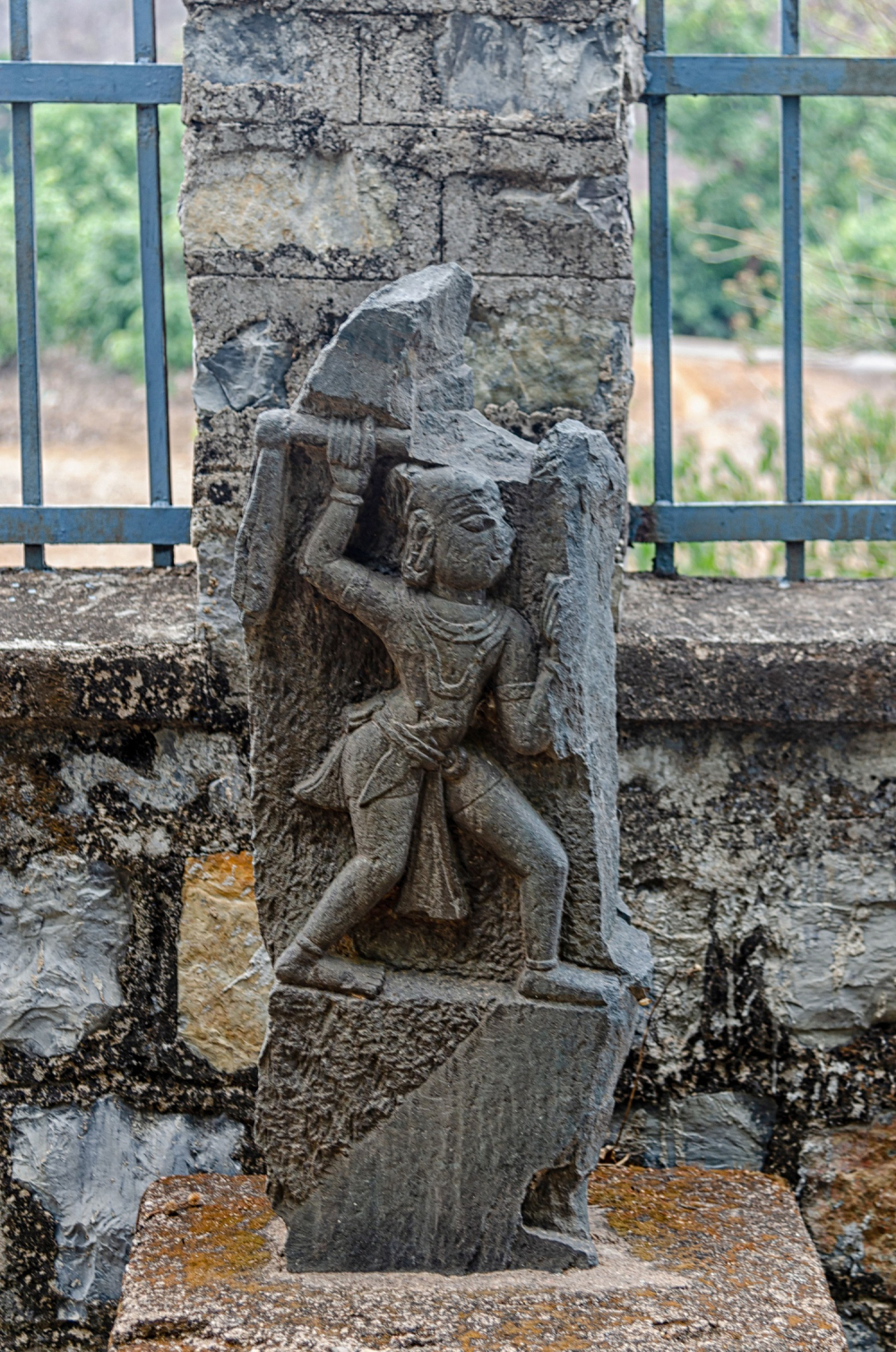
Bhoramdeo Temple Complex, Hero Stone
Hero of a higher status was shown atop or with a horse, whereas multi- panelled heavily carved ones appear at a later stage at the turn of the millennium, normally divided into three panels. The lowermost depicts the scene of a battle, or a hero-animal attack, etc.; the middle shows him being carried away by apsarās in a palanquin, and the topmost represents him as having reached the abode of Gods seated beside a linga or with other religious symbols.
Stone slabs used for building these monuments are engraved with depiction of the culture of the clan to which the dead belonged, along with the deceased’s own life and achievements. Figurines of animals, birds, men and women are also found in the engravings. The motifs also illustrate the dead person reaching heaven riding on a horse, and occasionally, an elephant.
These memorials are similar to the early ones found scattered all over eastern Madhya Pradesh, Andhra Pradesh, Maharashtra and Odisha. At times they are exquisitely carved like sculptures of temples, where they might reside as in the case of Bhoramdeo, but there also exist rougher versions, with a sword, or sometimes, a dagger.
Interestingly, unlike other regions of Chhattisgarh more popular for their memorials like Bastar, stele of the Bhoramdeo temple complex appear to be commemorated to women. These follow a consistent pattern; small sized stele with two panels, the lower portion depicting a couple in worship, the upper showing a woman’s forearm with open palm (Plate 3). These became popular in and after the 13th-14th centuries, with increasing cases of sati performance.
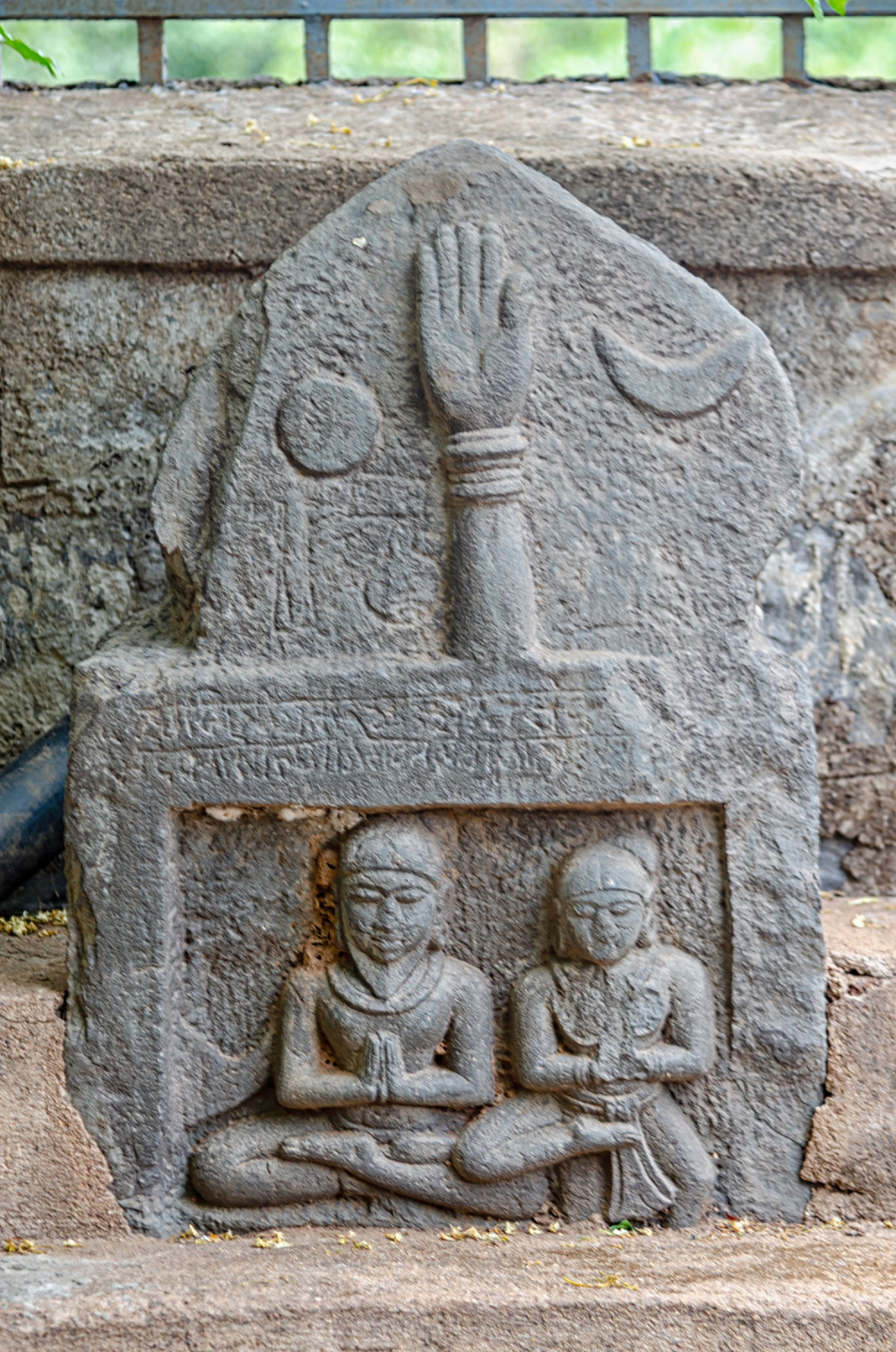
Bhoramdeo Temple Complex, Memorial to a Woman
The iconographic details of a typical sati stones from any region in India largely follow an idiomatic code. It depicts the right arm of a woman, bent at a right angle, with the hand outstretched and palm facing outwards (occasionally holding a lime, for auspiciousness), as though in a gesture of blessing. Bangles cover the forearm symbolizing her freedom from widowhood and eternal matrimonial bond with her husband. Sun and moon are etched onto either side of the arm signifying the eternal nature of such a sacrifice; at times a swāstika symbol is also depicted on the side. Now and then, the raised arm of the woman is shown tied to a pillar like structure: the sati performance requires the wife to sit on her husband’s pyre with his head on her lap.
A few stele line the compound wall of Madwa Mahal, a short distance from the Bhoramdeo Temple. Plate 4 has the image of a chieftain or warrior standing in fighting stance with his weapons, a sword and shield, towering over two women, who, in theory, immolated themselves at the death of their lord and master.
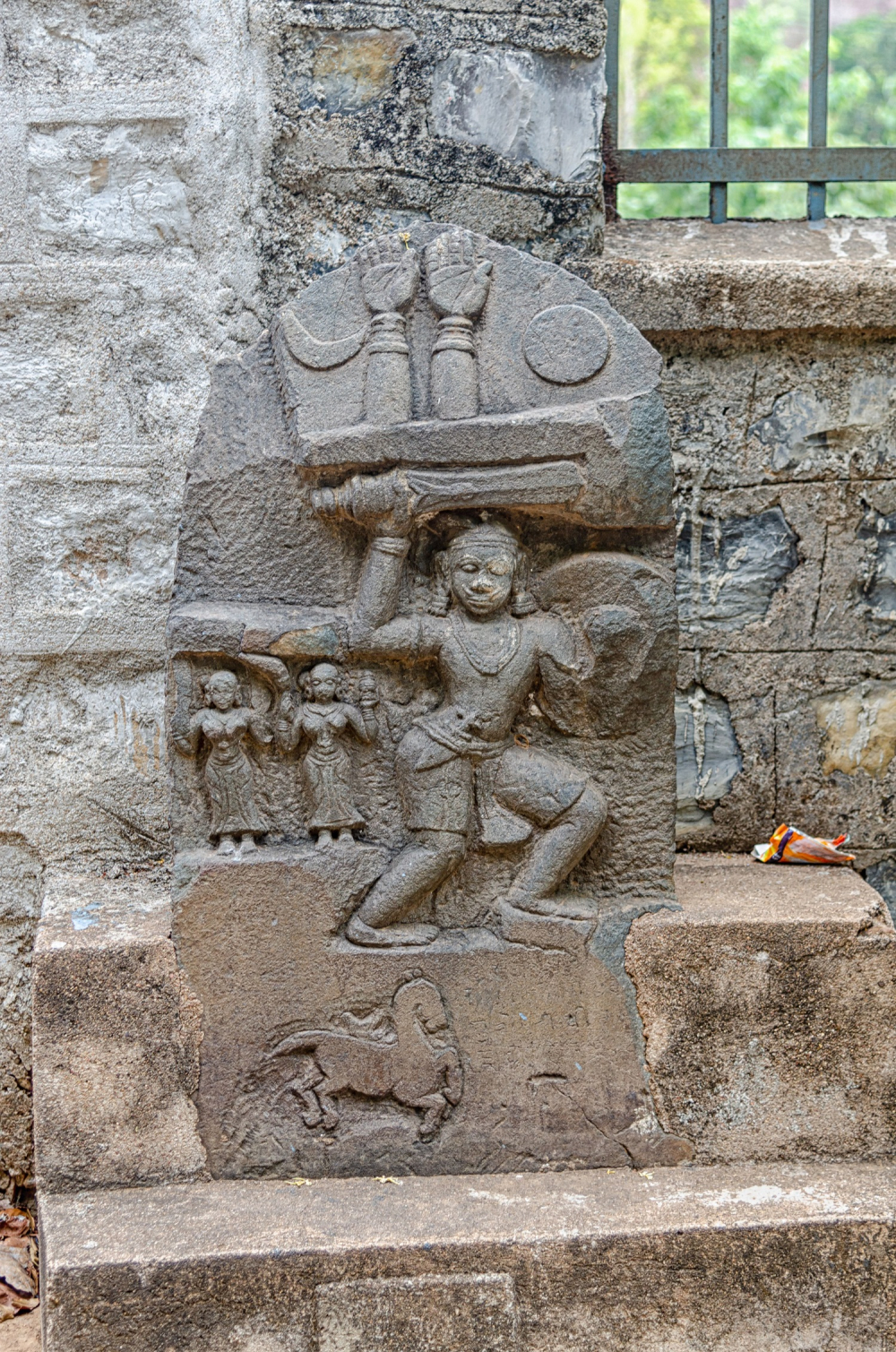
Madwa Mahal, Memorial to a Warrior[?] alongside Two Women
This act of committing sati made the wife and retinue holding chauris, who died with the warrior, worthy of a small monument, a sati stone. The upper portion depicts the essence of the woman’s sacrifice: in this case two women jumped into the pyre, their open palms and wrists with bangles blessing worshippers. This arms are flanked by images of sun and moon. The lower portion appears to be a later addition, cemented with the stone itself to the ground, showing a crude etching of a horse and saddle.
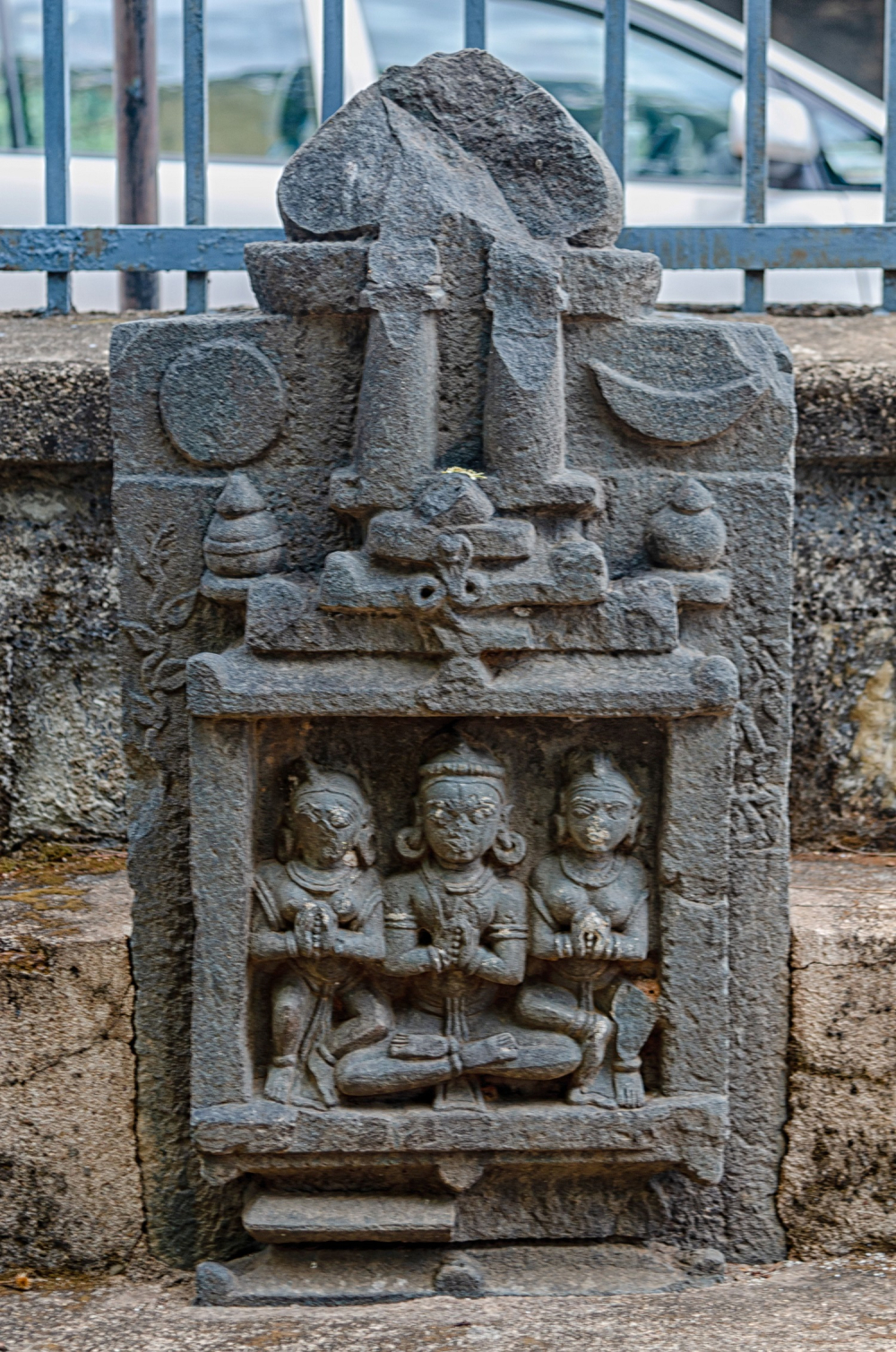
Madwa Mahal, Memorial of a Chieftain and his Two Wives
Plate 5 is a rectangular stele topped with what could be either a dome or an amlaka in the centre. This also commemorates two women who committed sati, their now defaced arms laying in the middle of the sun and moon. Below, the chieftain and his two wives sit together with folded hands holding rosary beads, cramped tightly within a temple-like structure. It shows a very specific nagara superstructure like those found in Khajuraho.
Inside the museum are kept pillar-like tall stele. The upper portion of Plate 6 displays an image of a couple facing each other worshipping a linga that lies between them. The larger lower part of the surface holds an inscription too defaced to be read. Another interesting figure is that of a bejewelled figure of a man ready to fight with his bow and arrows (Plate 7).
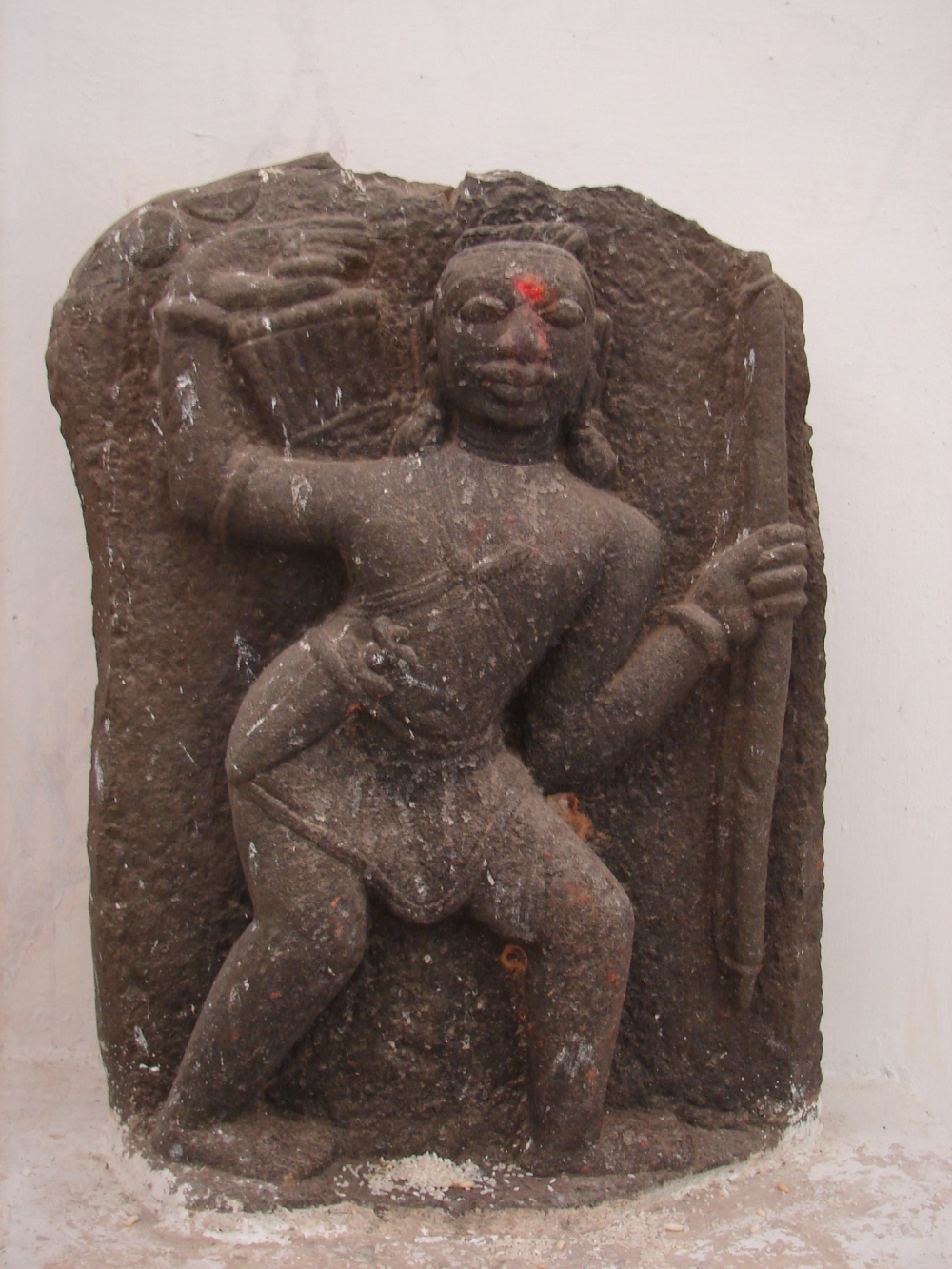
Bhoramdeo, Site Museum, Memorial of a Bejewelled Warrior or Hero
This type of memorial is more common in south India, especially 10th -12th century Andhra, which might have influenced the commemorative art of regions in Chhattisgarh.
Stylistic influence of surrounding regions can be distinctly seen in the visual imagery of these monuments. The mainstream ‘Hindu’ artistic traditions assimilate tribal or folk elements culminating in confluence of artistic patterns thoroughly ritualised, stronger within village communities.
This content has been created as part of a project commissioned by the Directorate of Culture and Archaeology, Government of Chhattisgarh, to document the cultural and natural heritage of the state of Chhattisgarh.
